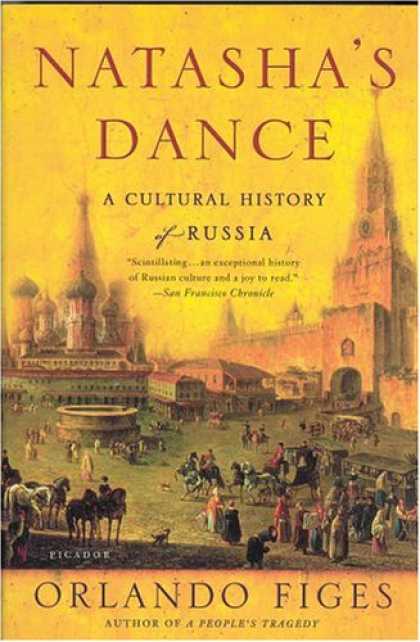 I read this book by Orlando Figes a few years ago, which provides a sweeping view at Russia's cultural history. As Lisa Jardine notes in her Guardian review:
I read this book by Orlando Figes a few years ago, which provides a sweeping view at Russia's cultural history. As Lisa Jardine notes in her Guardian review:Figes sets out to capture the many-stranded complexity of the idea of cultural 'Russianness'. But this is not just a cultural history, despite Figes's title. His book is especially angled to arouse the interest of those to whom the works of a litany of Russian artists, musicians and authors are already familiar and much-loved, as familiar as the curious Russian-clad figures in Figes's striking photographs are alien. What was it about Russia and its influences that inspired the novels of Tolstoy and Dostoevsky, the plays of Chekhov, the music of Shostakovich and Tchaikovsky, the choreography of Stravinsky, the paintings of Chagall and Kandinsky?
No small task, and I thought Figes did a wonderful job. My wife's older cousin, a drama critic in Moscow, noted that Figes missed a key point here and there, but overall he felt it was a pretty good general history.
What I liked most was the way Figes wove all these strands together, making it feel that in Russia and even to some degree in the later Soviet Union there was a great sense of cultural continuity, arguably beginning with Pushkin's Eugene Onegin. So much of Russian literature is self-referential and the writers, composers and artists all seemed to move within tight circles. There was the odd man out like Dostoevsky or Goncharov, but it was interesting to read how much an influence Pushkin had on Gogol, and how he inspired Gogol to write Dead Souls, one of my personal favorite novels.
Cool! I bought Natasha's Dance when it came out but never read it. During my first attempt at graduate school I chose Russian history as my "European" option. Even tried (failed) to teach myself to read Russian. I think I was under the spell of Dostoevsky at the time.
ReplyDeleteI don't think you will be disappointed, av. Very engaging book and cover so much of the Russian cultural scene, with many poignant insights, like the sad story of Mayakovsky as seen through his wife's eyes.
ReplyDeleteGreat movie to check out is "Russian Ark," all set within the Hermitage,
ReplyDeletehttp://www.imdb.com/title/tt0318034/